373 low relevance results shown for 'with'. Prev |1|2|3|4|5|6|7|8|9|10|11|12|13|14|15 | Next | View 100 per page
Showing low relevance matches only. Return to normal search results
Rocks and Minerals - Sedimentary, igneous and metamorphic rocks contain minerals and are formed by processes that occur within Earth over a variety of timescales ACSSU155 Year 8 Physical Sciences
Energy Forms - Energy appears in different forms, including movement (kinetic energy), heat and potential energy, and energy transformations and transfers cause change within systems ACSBL111 Year 12 Maintaining the internal environment
Homeostasis - Changes in an organisms metabolic activity, in addition to structural features and changes in physiological processes and behaviour, enable the organism to maintain its internal environment within tolerance limits ACSBL118 Year 12 Maintaining the internal environment
Infectious disease - Pathogens have adaptations that facilitate their entry into cells and tissues and their transmission between hosts; transmission occurs by various mechanisms including through direct contact, contact with body fluids, and via contaminated food, water or d ACSCH025 Year 11 Chemical fundamentals
Properties and structure of materials - Materials are either pure substances with distinct measurable properties (for example, melting and boiling point, reactivity, strength, density) or mixtures with properties dependent on the identity and relative amounts of the substances that make up the ACSCH073 Year 11 Molecular interactions and reactions
Rates of chemical reactions - Catalysts, including enzymes and metal nanoparticles, affect the rate of certain reactions by providing an alternative reaction pathway with a reduced activation energy, hence increasing the proportion of collisions that lead to a chemical change ACSCH091 Year 12 Equilibrium acids and redox reactions
Chemical equilibrium systems - Over time, physical changes and reversible chemical reactions reach a state of dynamic equilibrium in a closed system, with the relative concentrations of products and reactants defining the position of equilibrium ACSCH098 Year 12 Equilibrium acids and redox reactions
Chemical equilibrium systems - The strength of acids is explained by the degree of ionisation at equilibrium in aqueous solution, which can be represented with chemical equations and equilibrium constants (Ka) ACSCH131 Year 12 Structure synthesis and design
Chemical synthesis and design - Chemical synthesis involves the selection of particular reagents to form a product with specific properties (for example, pharmaceuticals, fuels, cosmetics, cleaning products) ACSPH016 Year 11 Thermal nuclear and electrical physics
Heating processes - Heat transfer occurs between and within systems by conduction, convection and/or radiation ACSPH139 Year 12 Revolutions in modern physics
Quantum theory - The Bohr model of the hydrogen atom integrates light quanta and atomic energy states to explain the specific wavelengths in the hydrogen spectrum and in the spectra of other simple atoms; the Bohr model enables line spectra to be correlated with atomic en ACSCH134 Year 12 Structure synthesis and design
Chemical synthesis and design - The yield of a chemical synthesis reaction can be calculated by comparing stoichiometric quantities with actual quantities ACSCH031 Year 11 Chemical fundamentals
Properties and structure of materials - The properties of ionic compounds (for example, high melting point, brittleness, ability to conduct electricity when liquid or in solution) are explained by modelling ionic bonding as ions arranged in a crystalline lattice structure with forces of attract ACSCH027 Year 11 Chemical fundamentals
Properties and structure of atoms - The type of bonding within substances explains their physical properties, including melting and boiling point, conductivity of both electricity and heat, strength and hardness ACSPH070 Year 11 Linear Motion and Waves
Waves - Mechanical waves transfer energy through a medium; mechanical waves may oscillate the medium or oscillate the pressure within the medium ACSPH077 Year 11 Linear Motion and Waves
Waves - The speed of light is finite and many orders of magnitude greater than the speed of mechanical waves (for example, sound and water waves); its intensity decreases in an inverse square relationship with distance from a point source ACSPH135 Year 12 Revolutions in modern physics
Quantum theory - Atomic phenomena and the interaction of light with matter indicate that states of matter and energy are quantised into discrete values
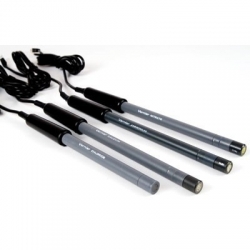

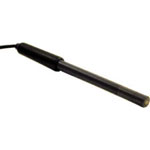
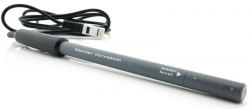
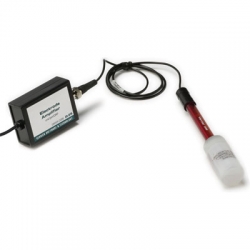
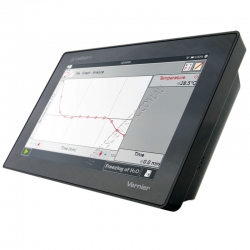







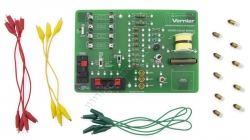
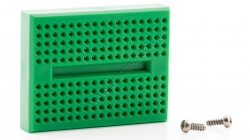
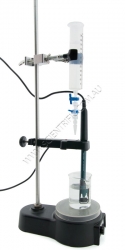

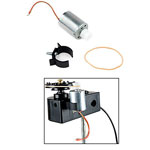
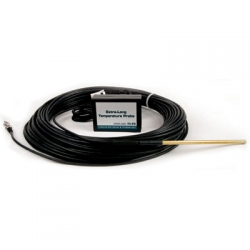
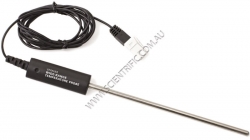
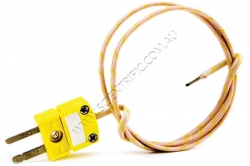
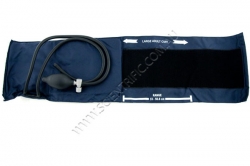
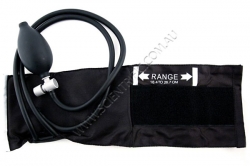
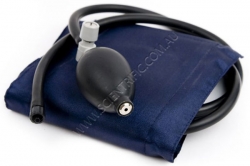

373 low relevance results shown for 'with'. Prev |1|2|3|4|5|6|7|8|9|10|11|12|13|14|15 | Next | View 100 per page
Showing low relevance matches only. Return to normal search results
Curriculum resources related to 'with'
ACSSU153 Year 8 Earth and Space SciencesRocks and Minerals - Sedimentary, igneous and metamorphic rocks contain minerals and are formed by processes that occur within Earth over a variety of timescales ACSSU155 Year 8 Physical Sciences
Energy Forms - Energy appears in different forms, including movement (kinetic energy), heat and potential energy, and energy transformations and transfers cause change within systems ACSBL111 Year 12 Maintaining the internal environment
Homeostasis - Changes in an organisms metabolic activity, in addition to structural features and changes in physiological processes and behaviour, enable the organism to maintain its internal environment within tolerance limits ACSBL118 Year 12 Maintaining the internal environment
Infectious disease - Pathogens have adaptations that facilitate their entry into cells and tissues and their transmission between hosts; transmission occurs by various mechanisms including through direct contact, contact with body fluids, and via contaminated food, water or d ACSCH025 Year 11 Chemical fundamentals
Properties and structure of materials - Materials are either pure substances with distinct measurable properties (for example, melting and boiling point, reactivity, strength, density) or mixtures with properties dependent on the identity and relative amounts of the substances that make up the ACSCH073 Year 11 Molecular interactions and reactions
Rates of chemical reactions - Catalysts, including enzymes and metal nanoparticles, affect the rate of certain reactions by providing an alternative reaction pathway with a reduced activation energy, hence increasing the proportion of collisions that lead to a chemical change ACSCH091 Year 12 Equilibrium acids and redox reactions
Chemical equilibrium systems - Over time, physical changes and reversible chemical reactions reach a state of dynamic equilibrium in a closed system, with the relative concentrations of products and reactants defining the position of equilibrium ACSCH098 Year 12 Equilibrium acids and redox reactions
Chemical equilibrium systems - The strength of acids is explained by the degree of ionisation at equilibrium in aqueous solution, which can be represented with chemical equations and equilibrium constants (Ka) ACSCH131 Year 12 Structure synthesis and design
Chemical synthesis and design - Chemical synthesis involves the selection of particular reagents to form a product with specific properties (for example, pharmaceuticals, fuels, cosmetics, cleaning products) ACSPH016 Year 11 Thermal nuclear and electrical physics
Heating processes - Heat transfer occurs between and within systems by conduction, convection and/or radiation ACSPH139 Year 12 Revolutions in modern physics
Quantum theory - The Bohr model of the hydrogen atom integrates light quanta and atomic energy states to explain the specific wavelengths in the hydrogen spectrum and in the spectra of other simple atoms; the Bohr model enables line spectra to be correlated with atomic en ACSCH134 Year 12 Structure synthesis and design
Chemical synthesis and design - The yield of a chemical synthesis reaction can be calculated by comparing stoichiometric quantities with actual quantities ACSCH031 Year 11 Chemical fundamentals
Properties and structure of materials - The properties of ionic compounds (for example, high melting point, brittleness, ability to conduct electricity when liquid or in solution) are explained by modelling ionic bonding as ions arranged in a crystalline lattice structure with forces of attract ACSCH027 Year 11 Chemical fundamentals
Properties and structure of atoms - The type of bonding within substances explains their physical properties, including melting and boiling point, conductivity of both electricity and heat, strength and hardness ACSPH070 Year 11 Linear Motion and Waves
Waves - Mechanical waves transfer energy through a medium; mechanical waves may oscillate the medium or oscillate the pressure within the medium ACSPH077 Year 11 Linear Motion and Waves
Waves - The speed of light is finite and many orders of magnitude greater than the speed of mechanical waves (for example, sound and water waves); its intensity decreases in an inverse square relationship with distance from a point source ACSPH135 Year 12 Revolutions in modern physics
Quantum theory - Atomic phenomena and the interaction of light with matter indicate that states of matter and energy are quantised into discrete values
Products related to 'with'

Vernier Ammonium Ion-Selective Electrode
VERNIER AMMONIUM ION-SELECTIVE ELECTRODE
Vernier's Ammonium Ion-Selective Electrode (ISE) can be used to measure the concentration of ammonium (NH4+) in aqueous samples.
Use the Vernier Ammonium ISE to measure levels of ammonium ions introduced from fertilizers. It can...
Order code: NH4-BTA

Vernier Calcium Ion-Selective Electrode
VERNIER CALCIUM ION-SELECTIVE ELECTRODE
Vernier's Calcium Ion-Selective Electrode (ISE) can be used to measure the concentration of Calcium (Ca2+) in aqueous samples.
Data from the Vernier Calcium ISE can give a good indication of hardness of water (as Ca2+). The conce...
Order code: CA-BTA

Vernier Nitrate Ion-Selective Electrode
VERNIER NITRATE ION-SELECTIVE ELECTRODE
Vernier's Nitrate Ion-Selective Electrode (ISE) can be used to measure the concentration of Nitrate (NO3-) in aqueous samples.
Nitrate concentration, which can be increased by acidic rainfall, fertilizer runoff from fields and pl...
Order code: NO3-BTA

Vernier Potassium Ion-Selective Electrode
VERNIER POTASSIUM ION-SELECTIVE ELECTRODE
The Vernier Potassium Ion-Selective Electrode can be used to measure the concentration of potassium (K+) ions in aqueous solutions.
The Vernier Potassium Ion-Selective Electrode makes the measurement of potassium ions portable....
Order code: K-BTA

Vernier ORP Sensor
VERNIER ORP SENSOR
The Vernier ORP sensor measures the ability of a solution to act as an oxidising agent or reducing agent. ORP stands for oxidation-reduction potential. ORP electrodes are often used to measure the oxidising ability of chlorine in swimming pools or to de...
Order code: ORP-BTA

Vernier LabQuest 3 Biology Standard Package
VERNIER LABQUEST 3 BIOLOGY STANDARD PACKAGE
Designed for use by a group of 2-4 students, the Vernier LabQuest 3 Biology Standard Package includes:
LABQ3 Vernier LabQuest 3 Interface
Order code: LQ3-BIO-ODX-INTL

Vernier LabQuest 3 Chemistry Standard Package
VERNIER LABQUEST 3 CHEMISTRY STANDARD PACKAGE
Designed for use by a group of 2-4 students, the Vernier LabQuest 3 Chemistry Standard Package includes:
LABQ3 Vernier LabQuest 3 Interface
Order code: LQ3-CH-DX-INTL

Vernier LabQuest 3 Chemistry Starter Package
VERNIER LABQUEST 3 CHEMISTRY STARTER PACKAGE
Designed for use by a group of 2-4 students, the Vernier LabQuest 3 Chemistry Starter Package includes:
LABQ3 Vernier LabQuest 3 Interface
Order code: LQ3-CH-ST-INTL

Vernier LabQuest 3 Advanced Chemistry Package
VERNIER LABQUEST 3 ADVANCED CHEMISTRY PACKAGE
Designed for use by a group of 2-4 students, the Vernier LabQuest 3 Advanced Chemistry Package includes:
LABQ3 Vernier LabQuest 3 Interface
Order code: LQ3-CHMA-SV-INTL

Vernier LabQuest 3 Environmental Science Package
VERNIER LABQUEST 3 ENVIRONMENTAL SCIENCE PACKAGE
Designed for use by a group of 2-4 students, the Vernier LabQuest 3 Environmental Science Package includes:
LABQ3 Vernier LabQuest 3 Interface
Order code: LQ3-EV-DX-INTL

Vernier LabQuest 3 Middle School Package
VERNIER LABQUEST 3 MIDDLE SCHOOL PACKAGE
Designed for use by a group of 2-4 students, the Vernier LabQuest 3 Middle School Package includes:
LABQ3 Vernier LabQuest 3 Interface
Order code: LQ3-MS-DX-INTL

Vernier LabQuest 3 Physics Standard Package
VERNIER LABQUEST 3 PHYSICS STANDARD PACKAGE
Designed for use by a group of 2-4 students, the Vernier LabQuest 3 Physics Standard Package includes:
LABQ3 Vernier LabQuest 3 Interface
Order code: LQ3-PHY-DX-INTL

Vernier LabQuest 3 Physics Starter Package
VERNIER LABQUEST 3 PHYSICS STARTER PACKAGE
Designed for use by a group of 2-4 students, the Vernier Labquest 3 Physics Starter Package includes:
LABQ3 Vernier LabQuest 3 Interface
Order code: LQ3-PHY-ST-INTL

Vernier Circuit Board 2
VERNIER CIRCUIT BOARD 2
The Vernier Circuit Board 2 is a convenient platform for circuit labs, from basic series and parallel circuits to RLC circuits. Many components are provided for experimentation, and additional components can be added to expand the capability of thi...
Order code: VCB2

Vernier VCB2 Optional Breadboard Kit
VERNIER VCB2 OPTIONAL BREADBOARD KIT
Install this small breadboard on the Vernier Circuit Board 2 in order to easily conduct experiments using additional electronic components not permanently mounted on the Vernier Circuit Board 2.
With this kit, you can create blinki...
Order code: VCB2-OBBK

Vernier Drop Counter
VERNIER DROP COUNTER
The Drop Counter precisely records the number of drops of titrant added during a titration, which is automatically converted into volume. It may be used in conjunction with other sensors, such as a pH Sensor, Conductivity Probe or ORP Sensor to perfor...
Order code: VDC-BTD

Vernier Relative Humidity Sensor
VERNIER RELATIVE HUMIDITY SENSOR
Vernier's Relative Humidity Sensor contains an integrated circuit that can be used to monitor relative humidity
over the range 0 to 95% (± 5%). The sensor has applications in weather studies, monitoring greenhouses
or for determining d...
Order code: RH-BTA

Vernier Rotary Motion Motor Kit
VERNIER ROTARY MOTION MOTOR KIT
This kit includes a small electric motor with pulley, rubber band belt, motor clip and mounting screw. The motor can be attached to the RMV-BTD Vernier Rotary Motion Sensor and be used as an analogue tachometer, or generator. You can also p...
Order code: MK-RMV

Vernier Extra Long Temperature Probe
VERNIER EXTRA LONG TEMPERATURE PROBE
This extra long temperature probe has a 30 metre cable and is designed for remote, outdoor temperature sensing or for measuring temperature at various depths in lakes and streams.
Requirements:
This sensor requires suitable ...
Order code: TPL-BTA

Vernier Wide Range Temperature Probe
VERNIER WIDE RANGE TEMPERATURE PROBE
Vernier's rugged Wide-Range Temperature Probe measures a wide temperature range from 20 to 330°C. The high upper limit of the sensor allows melting point determinations of most organic compounds. It uses Resistance Temperature Detecti...
Order code: WRT-BTA

Vernier Replacement Thermocouple
VERNIER TYPE-K REPLACEMENT THERMOCOUPLE WIRE
A replacement type-K wire approximately 50cm long with a range of 200°C to +1,400°C suitable for
Vernier's GDX-TC Go Direct Thermocouple and TCA-BTA Thermocouple.
Note: KWIRE-TCA will not connect with older Vernier...
Order code: KWIRE-TCA

Vernier Blood Pressure Cuff - Large
VERNIER LARGE BLOOD PRESSURE CUFF
Large sized blood pressure cuff for use with BPS-BTA and suitable for arm circumferences between 39-50cm.
Order code: CUFF-LG

Vernier Blood Pressure Cuff - Small
VERNIER SMALL BLOOD PRESURE CUFF
Small sized blood pressure cuff for use with BPS-BTA and suitable for arm circumferences between 18-27cm.
Order code: CUFF-SM

Vernier Blood Pressure Cuff - Standard
VERNIER STANDARD BLOOD PRESSURE CUFF
Standard sized blood pressure cuff for use with BPS-BTA and suitable for arm circumferences between 27-39cm.
Order code: CUFF-STD

Vernier CO2 / O2 Respiration Chamber
VERNIER CO2/O2 RESPIRATION CHAMBER
The Vernier CO2/O2 Respiration Chamber is the same clear plastic bottle that is supplied with
CO2-BTA Vernier CO2 sensor
O2-BTA Vernier O2 sensor
GDX-CO2 Vernier Go Direct CO2 sensor
GDX-O2 Vernier Go Direct O2 sensor
ET...
Order code: CO2-BTL
373 low relevance results shown for 'with'. Prev |1|2|3|4|5|6|7|8|9|10|11|12|13|14|15 | Next | View 100 per page



 ,
,